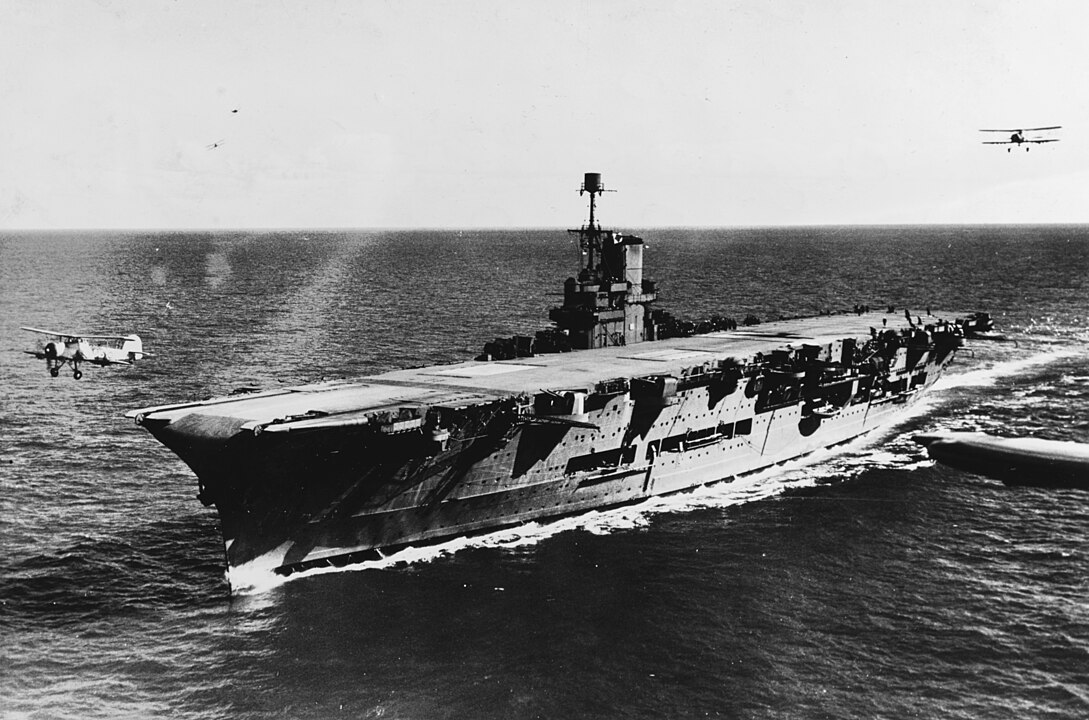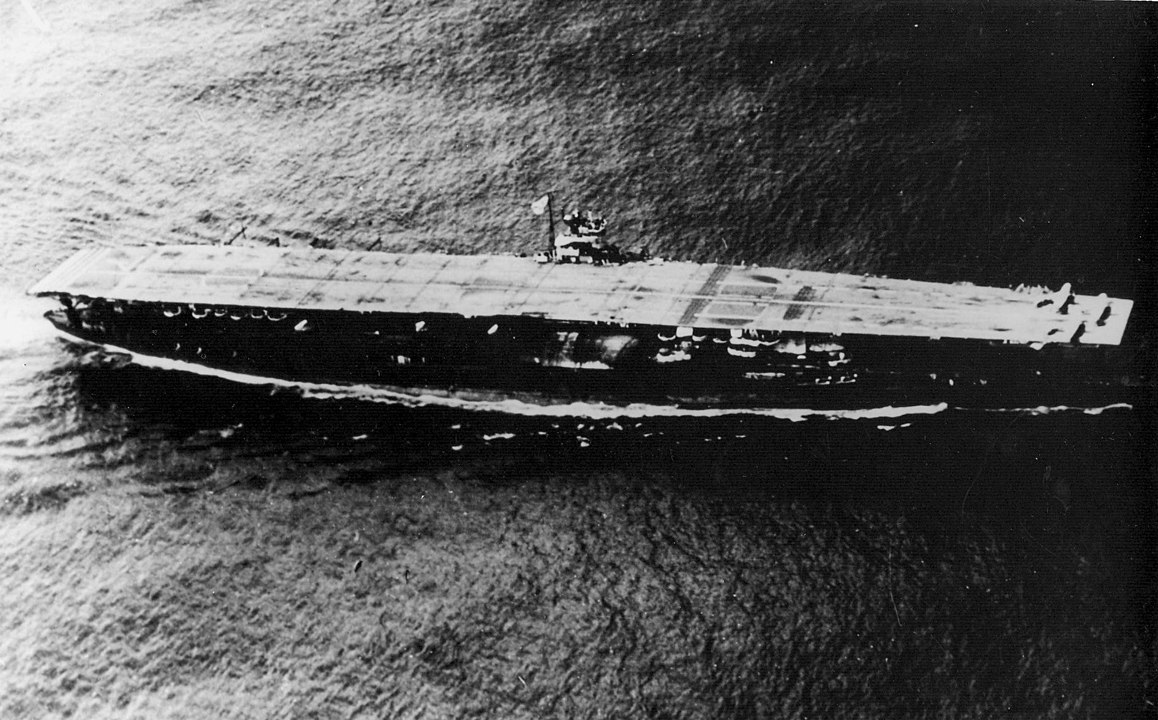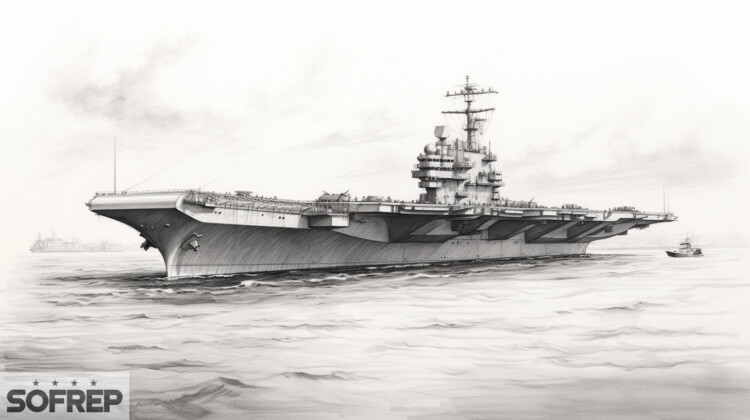World War II stands as an era of unprecedented innovation and technological advancement in warfare. Amidst the thunderous clash of armies and the distant rumble of artilleries, a new breed of naval warfare was quietly emerging, forever changing the course of history: aircraft carriers. This revolutionary vessel emerged as a towering behemoth of steel and ambition, sailing onto the stage of global conflict and redefining the rules of engagement for naval forces along the way.
Birth of a New Era
The concept of the aircraft carrier had been floating around since the early 20th century, but it was during the crucible of the Second World War that this revolutionary vessel came into its own. Conventional battleships and cruisers, while formidable, were constrained by their limited range and susceptibility to aerial attacks. The aircraft carrier, a concept born out of experimentation and vision, offered a solution that would rewrite the rules of engagement between naval forces. The pioneering carriers, such as the British HMS Hermes and the Japanese Hōshō, were relatively modest vessels but carried the seeds of transformation. These carriers demonstrated the potential of launching and recovering aircraft from a mobile platform, laying the foundation for the future giants of the sea.
With the lessons of the Pearl Harbor attack fresh in their minds, naval strategists around the world soon realized the potential of aircraft carriers to project air power far beyond the reach of traditional battleships. Notably, realizing that a well-equipped carrier fleet could strike swiftly and decisively anywhere in the world sparked a race to construct these floating fortresses.
USS Enterprise: The Backbone of American Naval Power
Among the pioneers of aircraft carrier development, none stood taller than the USS Enterprise (CV 6). It became the symbol of American naval might as it played a pivotal role in some of the most crucial naval battles in military history, like Midway and Guadalcanal. With a length of approximately 827 feet and a beam of around 114 feet, it carried a displacement of over 25,000 tons, showcasing its massive scale.

At the heart of the Enterprise’s might was its formidable air wing, a diverse and dynamic fleet of aircraft that spanned fighter planes, torpedo bombers, and dive bombers. These aircraft formed the teeth and claws of the carrier, capable of launching a devastating aerial assault on enemy forces, reshaping the course of battles, and eventually turning the tide of engagements. Its air wing, comprising iconic planes like the Grumman F4F Wildcat and the Douglas SBD Dauntless, was a formidable force that showcased the versatility and adaptability of carrier-based air power.
Nevertheless, it wasn’t just the aircraft that set the Enterprise apart; its innovative design and cutting-edge features undoubtedly distinguished it from its peers. One of its standout features was the armored flight deck, a technological marvel that added an extra layer of protection to the ship’s vital operations. This innovation allowed the Enterprise to withstand punishing blows and launch planes even under intense enemy fire. Overall, its presence was a beacon of hope for the US Navy and a testament to the potential of aircraft carriers.
The Royal Navy’s Indomitable Spirit
Meanwhile, across the Atlantic, the Royal Navy wrote its own chapter in the aircraft carrier saga. The HMS Ark Royal, with her iconic flight deck extending beyond the ship’s bow, captured the imagination of naval enthusiasts and adversaries alike.

As a trailblazing aircraft carrier, the HMS Ark Royal boasted an impressive set of specifications with a length of approximately 800 feet and a beam of around 118 feet, exhibiting a substantial presence in the waters. Nonetheless, it was her iconic Fairey Swordfish biplanes that defied the odds and torpedoed the mighty German battleship Bismarck, a moment that showcased the carrier’s ability to challenge even the most formidable adversaries. The Ark Royal and her sister ships proved that size and brute force were not the only routes to maritime supremacy.
Japan’s Deadly Arsenal: The Pearl Harbor Factor
Japan’s surprise attack on Pearl Harbor in December 1941 sent shockwaves through the world, and it was the aircraft carrier that was at the heart of this audacious strike. The Japanese carriers Akagi, Kaga, Soryu, and Hiryu unleashed their deadly air power on the unsuspecting American Pacific Fleet, crippling battleships and thrusting the United States into the war. The attack’s success underscored the carrier’s ability to carry out precise and devastating strikes, marking a turning point in the perception of naval warfare and challenging traditional notions of naval dominance centered around battleships.

Legacy and Modern Warfare
World War II’s aircraft carriers left an indelible mark on the landscape of warfare. Their ability to project air power across vast distances, strike with precision, and adapt swiftly to changing situations turned these floating airfields into veritable powerhouses.
The lessons learned from these formidable vessels became the cornerstone of modern naval doctrines in the aftermath of the Second World War. Its legacy reverberated through the Cold War era when the United States and the Soviet Union engaged in a tense race of deterrence. Aircraft carriers emerged as potent symbols of military might, capable of projecting force across the globe and providing a strategic advantage in a world perpetually on the brink of conflict.
As technological advancements continued to shape the 20th and 21st centuries, aircraft carriers evolved to meet new challenges. Nuclear propulsion provided them unparalleled endurance and speed, catapult systems enabled more efficient takeoffs, and advanced aircraft expanded their versatility and reach. Carriers evolved into highly sophisticated and integral components of modern naval forces, facilitating power projection, humanitarian missions, and disaster relief efforts in addition to their traditional combat roles.
In the present day, aircraft carriers remain central to the strategies of many nations, embodying the principles of mobility, versatility, and force projection. The legacy of World War II carriers has transcended their original purpose, becoming symbols of a nation’s technological prowess and military readiness. From the flight decks of World War II’s Pacific battles to the complex geopolitical landscapes of today, these revolutionary battlecruisers stand as enduring testaments to human ingenuity, strategic thinking, and the ever-evolving nature of conflict. Their legacy serves as a constant reminder that the lessons of the past shape the battles of the future and that these floating airfields continue to play a pivotal role in shaping the destiny of nations on the global stage.










COMMENTS
You must become a subscriber or login to view or post comments on this article.